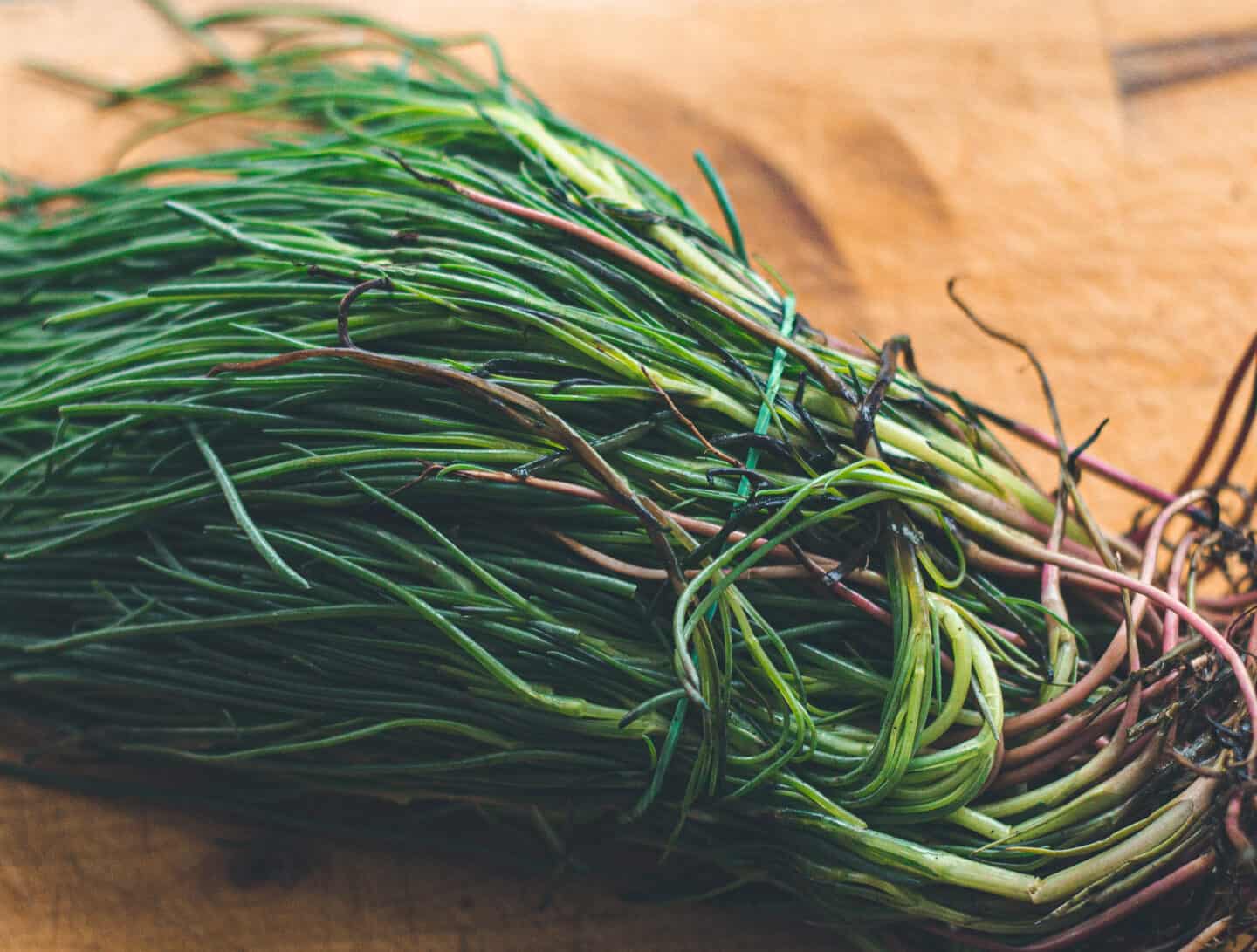
Monk's Beard, also known as Agretti or Salsola soda, is a unique vegetable that has been gaining popularity in kitchens around the world. But what exactly makes this green so special? Monk's Beard is a succulent, salty plant that thrives in coastal areas, particularly in Italy. Its tender, needle-like leaves offer a crisp texture and a slightly bitter taste, making it a favorite among chefs for salads, pastas, and seafood dishes. Rich in vitamins and minerals, this plant not only adds a burst of flavor but also packs a nutritional punch. Curious about its origins, culinary uses, and health benefits? Let's dive into 15 fascinating facts about Monk's Beard that will leave you eager to try it in your next meal!
Key Takeaways:
- Monk's Beard, also known as Agretti, is a nutritious and versatile vegetable with a rich history dating back to ancient times. It's packed with vitamins, high in fiber, and low in calories, making it a healthy choice for salads, pasta dishes, and sides.
- Cultivating Monk's Beard not only benefits our taste buds but also the environment. It thrives in salty soils, improves soil quality, and supports biodiversity, making it a sustainable and valuable crop in coastal areas.
What is Monk's Beard?
Monk's Beard, also known as Agretti or Salsola soda, is a unique vegetable that has been gaining popularity in culinary circles. This green, succulent plant has a fascinating history and a variety of uses. Let's dive into some intriguing facts about Monk's Beard.
Historical Background
Monk's Beard has an interesting past that dates back centuries. Its history is as rich as its flavor.
- Ancient Origins: Monk's Beard was first cultivated in the Mediterranean region. It was particularly popular in Italy and Spain.
- Monastic Cultivation: The name "Monk's Beard" comes from the fact that monks in Italy used to grow it in their gardens.
- Salt Production: Historically, Monk's Beard was used in the production of soda ash, which was essential for making glass and soap.
Nutritional Benefits
Monk's Beard isn't just tasty; it's also packed with nutrients. Here are some health benefits you might not know about.
- Rich in Vitamins: This vegetable is a good source of vitamins A and C, which are essential for maintaining healthy skin and a strong immune system.
- High in Fiber: Monk's Beard contains a significant amount of dietary fiber, aiding digestion and promoting gut health.
- Low in Calories: For those watching their calorie intake, Monk's Beard is a great choice. It's low in calories but high in nutritional value.
Culinary Uses
Monk's Beard is versatile in the kitchen. Its unique flavor and texture make it a favorite among chefs.
- Salads and Sides: Often used in salads, Monk's Beard adds a crunchy texture and a slightly salty flavor.
- Pasta Dishes: In Italy, it's commonly paired with pasta, providing a fresh, green contrast to rich sauces.
- Grilled or Sautéed: This vegetable can be grilled or sautéed with garlic and olive oil for a simple yet delicious side dish.
Environmental Impact
Monk's Beard has some surprising environmental benefits that make it a sustainable choice.
- Salt Tolerance: This plant thrives in salty soils where other crops might fail, making it a valuable crop in coastal areas.
- Soil Improvement: Growing Monk's Beard can help improve soil quality by reducing salinity levels.
- Biodiversity: Cultivating Monk's Beard supports biodiversity, as it provides a habitat for various insects and small animals.
Cultural Significance
Monk's Beard holds a special place in the hearts of many, especially in Mediterranean cultures.
- Italian Cuisine: In Italy, Monk's Beard is a seasonal delicacy, often enjoyed during the spring months.
- Traditional Festivals: Some regions celebrate the harvest of Monk's Beard with festivals and special dishes.
- Symbol of Spring: This vegetable is often seen as a symbol of renewal and the arrival of spring, bringing fresh flavors to the table.
The Final Bite
Monk's Beard, or Agretti, is a unique and nutritious green that deserves a spot on your plate. With its salty flavor and crunchy texture, it adds a delightful twist to various dishes. This Mediterranean plant is not only tasty but also packed with vitamins and minerals like vitamin A, vitamin C, and iron. It's a versatile ingredient that can be sautéed, steamed, or even eaten raw in salads.
Finding Monk's Beard might be a bit tricky outside of Italy, but specialty stores or farmers' markets often carry it during its short season. If you're lucky enough to get your hands on some, give it a try. Your taste buds and body will thank you. So next time you're looking to spice up your meals, remember this underappreciated gem. Happy cooking!
Frequently Asked Questions
Was this page helpful?
Our commitment to delivering trustworthy and engaging content is at the heart of what we do. Each fact on our site is contributed by real users like you, bringing a wealth of diverse insights and information. To ensure the highest standards of accuracy and reliability, our dedicated editors meticulously review each submission. This process guarantees that the facts we share are not only fascinating but also credible. Trust in our commitment to quality and authenticity as you explore and learn with us.


